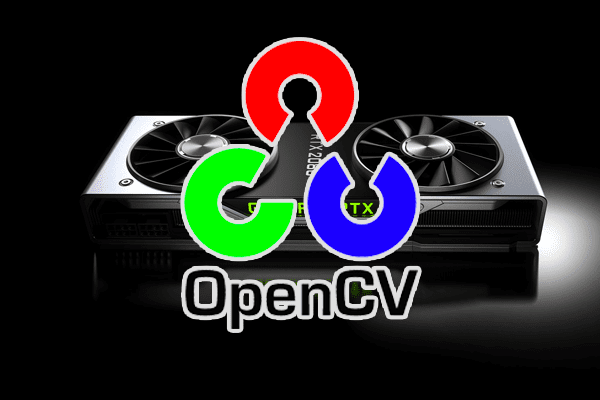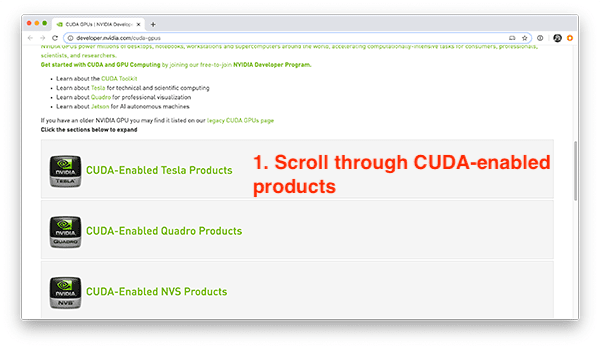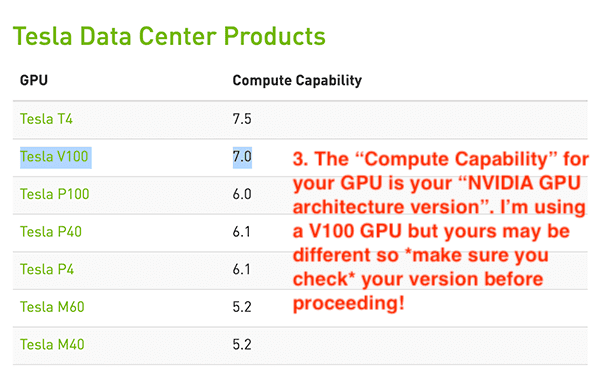In this tutorial, you will learn how to use OpenCV’s “Deep Neural Network” (DNN) module with NVIDIA GPUs, CUDA, and cuDNN for 211-1549% faster inference.
Back in August 2017, I published my first tutorial on using OpenCV’s “deep neural network” (DNN) module for image classification.
PyImageSearch readers loved the convenience and ease-of-use of OpenCV’s
dnnmodule so much that I then went on to publish additional tutorials on the
dnnmodule, including:
- Object detection with deep learning and OpenCV
- Real-time object detection with deep learning and OpenCV
- YOLO object detection with OpenCV
- Mask R-CNN with OpenCV
Each one of those guides used OpenCV’s
dnnmodule to (1) load a pre-trained network from disk, (2) make predictions on an input image, and then (3) display the results, allowing you to build your own custom computer vision/deep learning pipeline for your particular project.
However, the biggest problem with OpenCV’s dnn
module was a lack of NVIDIA GPU/CUDA support — using these models you could not easily use a GPU to improve the frames per second (FPS) processing rate of your pipeline.
That wasn’t too much of a big deal for the Single Shot Detector (SSD) tutorials, which can easily run at 25-30+ FPS on a CPU, but it was a huge problem for YOLO and Mask R-CNN which struggle to get above 1-3 FPS on a CPU.
That all changed in 2019’s Google Summer of Code (GSoC).
Led by dlib’s Davis King, and implemented by Yashas Samaga, OpenCV 4.2 now supports NVIDIA GPUs for inference using OpenCV’s dnn
module, improving inference speed by up to 1549%!
In today’s tutorial, I show you how to compile and install OpenCV to take advantage of your NVIDIA GPU for deep neural network inference.
Then, in next week’s tutorial, I’ll provide you with Single Shot Detector, YOLO, and Mask R-CNN code that can be used to take advantage of your GPU using OpenCV. We’ll then benchmark the results and compare them to CPU-only inference so you know which models can benefit the most from using a GPU.
To learn how to compile and install OpenCV’s “dnn” module with NVIDIA GPU, CUDA, and cuDNN support, just keep reading!
Looking for the source code to this post?
Jump right to the downloads section.
How to use OpenCV’s ‘dnn’ module with NVIDIA GPUs, CUDA, and cuDNN
In the remainder of this tutorial I will show you how to compile OpenCV from source so you can take advantage of NVIDIA GPU-accelerated inference for pre-trained deep neural networks.
Assumptions when compiling OpenCV for NVIDIA GPU support
In order to compile and install OpenCV’s “deep neural network” module with NVIDIA GPU support, I will be making the following assumptions:
- You have an NVIDIA GPU. This should be an obvious assumption. If you do not have an NVIDIA GPU, you cannot compile OpenCV’s “dnn” module with NVIDIA GPU support.
- You are using Ubuntu 18.04 (or another Debian-based distribution). When it comes to deep learning, I strongly recommend Unix-based machines over Windows systems (in fact, I don’t support Windows on the PyImageSearch blog). If you intend to use a GPU for deep learning, go with Ubuntu over macOS or Windows — it’s so much easier to configure.
- You know how to use a command line. We’ll be making use of the command line in this tutorial. If you’re unfamiliar with the command line, I recommend reading this intro to the command line first and then spending a few hours (or even days) practicing. Again, this tutorial is not for those brand new to the command line.
- You are capable of reading terminal output and diagnosing issues. Compiling OpenCV from source can be challenging if you’ve never done it before — there are a number of things that can trip you up, including missing packages, incorrect library paths, etc. Even with my detailed guides, you will likely make a mistake along the way. Don’t be discouraged! Take the time to understand the commands you’re executing, what they do, and most importantly, read the output of the commands! Don’t go blindly copying and pasting; you’ll only run into errors.
With all that said, let’s start configuring OpenCV’s “dnn” module for NVIDIA GPU inference.
Step #1: Install NVIDIA CUDA drivers, CUDA Toolkit, and cuDNN
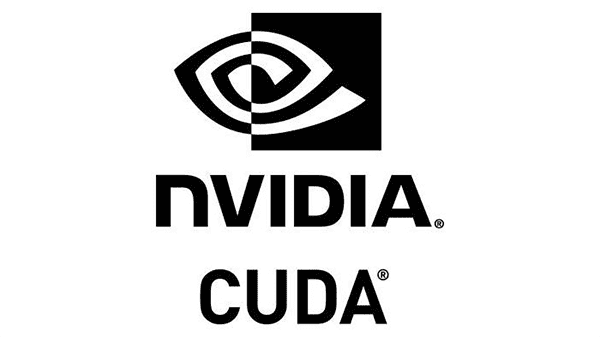
Figure 1: In this tutorial we will learn how to use OpenCV’s “dnn” module with NVIDIA GPUs, CUDA, and cuDNN.
This tutorial makes the assumption that you already have:
- An NVIDIA GPU
- The CUDA drivers for that particular GPU installed
- CUDA Toolkit and cuDNN configured and installed
If you have an NVIDIA GPU on your system but have yet to install the CUDA drivers, CUDA Toolkit, and cuDNN, you will need to configure your machine first — I will not be covering CUDA configuration and installation in this guide.
To learn how to install the NVIDIA CUDA drivers, CUDA Toolkit, and cuDNN, I recommend you read my Ubuntu 18.04 and TensorFlow/Keras GPU install guide — once you have the proper NVIDIA drivers and toolkits installed, you can come back to this tutorial.
Step #2: Install OpenCV and “dnn” GPU dependencies
The first step in configuring OpenCV’s “dnn” module for NVIDIA GPU inference is to install the proper dependencies:
$ sudo apt-get update $ sudo apt-get upgrade $ sudo apt-get install build-essential cmake unzip pkg-config $ sudo apt-get install libjpeg-dev libpng-dev libtiff-dev $ sudo apt-get install libavcodec-dev libavformat-dev libswscale-dev $ sudo apt-get install libv4l-dev libxvidcore-dev libx264-dev $ sudo apt-get install libgtk-3-dev $ sudo apt-get install libatlas-base-dev gfortran $ sudo apt-get install python3-dev
Most of these packages should have been installed if you followed my Ubuntu 18.04 Deep Learning configuration guide, but I would recommend running the above command just to be safe.
Step #3: Download OpenCV source code
There is no “pip-installable” version of OpenCV that comes with NVIDIA GPU support — instead, we’ll need to compile OpenCV from scratch with the proper NVIDIA GPU configurations set.
The first step in doing so is to download the source code for OpenCV v4.2:
$ cd ~ $ wget -O opencv.zip https://github.com/opencv/opencv/archive/4.2.0.zip $ wget -O opencv_contrib.zip https://github.com/opencv/opencv_contrib/archive/4.2.0.zip $ unzip opencv.zip $ unzip opencv_contrib.zip $ mv opencv-4.2.0 opencv $ mv opencv_contrib-4.2.0 opencv_contrib
We can now move on with configuring our build.
Step #4: Configure Python virtual environment
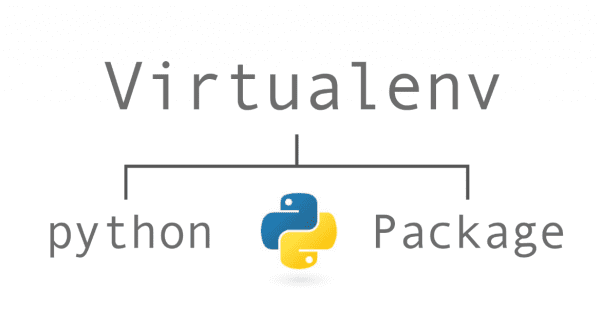
Figure 2: Python virtual environments are a best practice for both Python development and Python deployment. We will create an OpenCV CUDA virtual environment in this blog post so that we can run OpenCV with its new CUDA backend for conducting deep learning and other image processing on your CUDA-capable NVIDIA GPU (image source).
If you followed my Ubuntu 18.04, TensorFlow, and Keras Deep Learning configuration guide, then you should already have virtualenv and virtualenvwrapper installed:
- If your machine is already configured, skip to the
mkvirtualenv
commands in this section. - Otherwise, follow along with each of these steps to configure your machine.
Python virtual environments are a best practice when it comes to Python development. They allow you to test different versions of Python libraries in sequestered, independent development and production environments. Python virtual environments are considered a best practice in the Python world — I use them daily and you should too.
If you haven’t yet installed
pip, Python’s package manager, you can do so using the following command:
$ wget https://bootstrap.pypa.io/get-pip.py $ sudo python3 get-pip.py
Once
pipis installed, you can install both
virtualenvand
virtualenvwrapper:
$ sudo pip install virtualenv virtualenvwrapper $ sudo rm -rf ~/get-pip.py ~/.cache/pip
You then need to open up your
~/.bashrcfile and update it to automatically load virtualenv/virtualenvwrapper whenever you open up a terminal.
I prefer to use the
nanotext editor, but you can use whichever editor you are most comfortable with:
$ nano ~/.bashrc
Once you have the
~/.bashrcfile open, scroll to the bottom of the file, and insert the following:
# virtualenv and virtualenvwrapper export WORKON_HOME=$HOME/.virtualenvs export VIRTUALENVWRAPPER_PYTHON=/usr/bin/python3 source /usr/local/bin/virtualenvwrapper.sh
From there, save and exit your terminal (
ctrl + x,
y,
enter).
You can then reload your
~/.bashrcfile in your terminal session:
$ source ~/.bashrc
You only need to run the above command once — since you updated your
~/.bashrcfile, the virtualenv/virtualenvwrapper environment variables will be automatically set whenever you open a new terminal window.
The final step is to create your Python virtual environment:
$ mkvirtualenv opencv_cuda -p python3
The
mkvirtualenvcommand creates a new Python virtual environment named
opencv_cudausing Python 3.
You should then install NumPy into the
opencv_cudaenvironment:
$ pip install numpy
If you ever close your terminal or deactivate your Python virtual environment, you can access it again via the
workoncommand:
$ workon opencv_cuda
If you are new to Python virtual environments, I suggest you take a second and read up on how they work — they are a best practice in the Python world.
If you choose not to use them, that’s perfectly fine, but keep in mind that your choice doesn’t absolve you from learning proper Python best practices. Take the time now to invest in your knowledge.
Step #5: Determine your CUDA architecture version
When compiling OpenCV’s “dnn” module with NVIDIA GPU support, we’ll need to determine our NVIDIA GPU architecture version:
- This version number is a requirement when we set the
CUDA_ARCH_BIN
variable in ourcmake
command in the next section. - The NVIDIA GPU architecture version is dependent on which GPU you are using, so ensure you know your GPU model ahead of time.
- Failing to correctly set your
CUDA_ARCH_BIN
variable can result in OpenCV still compiling but failing to use your GPU for inference (making it troublesome to diagnose and debug).
One of the easiest ways to determine your NVIDIA GPU architecture version is to simply use the nvidia-smi
command:
$ nvidia-smi Mon Jan 27 14:11:32 2020 +-----------------------------------------------------------------------------+ | NVIDIA-SMI 410.104 Driver Version: 410.104 CUDA Version: 10.0 | |-------------------------------+----------------------+----------------------+ | GPU Name Persistence-M| Bus-Id Disp.A | Volatile Uncorr. ECC | | Fan Temp Perf Pwr:Usage/Cap| Memory-Usage | GPU-Util Compute M. | |===============================+======================+======================| | 0 Tesla V100-SXM2... Off | 00000000:00:04.0 Off | 0 | | N/A 35C P0 38W / 300W | 0MiB / 16130MiB | 0% Default | +-------------------------------+----------------------+----------------------+ +-----------------------------------------------------------------------------+ | Processes: GPU Memory | | GPU PID Type Process name Usage | |=============================================================================| | No running processes found | +-----------------------------------------------------------------------------+
Inspecting the output, you can see that I am using an NVIDIA Tesla V100 GPU. Make sure you run the
nvidia-smicommand yourself to verify your GPU model before continuing.
Now that I have my NVIDIA GPU model, I can move on to determining the architecture version.
You can find your NVIDIA GPU architecture version for your particular GPU using this page:
https://developer.nvidia.com/cuda-gpus
Scroll down to the list of CUDA-Enabled Tesla, Quadro, NVS, GeForce/Titan, and Jetson products:
Since I am using a V100, I’ll click on the “CUDA-Enabled Tesla Products” section:
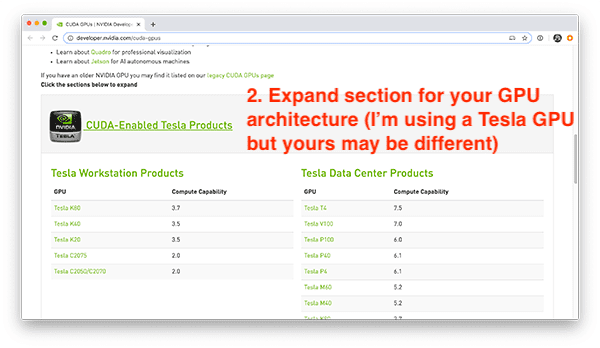
Figure 4: Click on the “CUDA-Enabled Tesla Products” section as the next step to install CUDA into your OpenCV installation for your NVIDIA GPU.
Scrolling down, I can see my V100 GPU:
As you can see, my NVIDIA GPU architecture version is 7.0
— you should perform the same process for your own GPU model.
Once you’ve identified your NVIDIA GPU architecture version, make note of it, and then proceed to the next section.
Step #6: Configure OpenCV with NVIDIA GPU support
At this point we are ready to configure our build using the
cmakecommand.
The
cmakecommand scans for dependencies, configures the build, and generates the files necessary for
maketo actually compile OpenCV.
To configure the build, start by making sure you are inside the Python virtual environment you are using to compile OpenCV with NVIDIA GPU support:
$ workon opencv_cuda
Next, change directory to where you downloaded the OpenCV source code, and then create a
builddirectory:
$ cd ~/opencv $ mkdir build $ cd build
You can then run the following
cmakecommand, making sure you set the
CUDA_ARCH_BINvariable based on your NVIDIA GPU architecture version, which you found in the previous section:
$ cmake -D CMAKE_BUILD_TYPE=RELEASE \ -D CMAKE_INSTALL_PREFIX=/usr/local \ -D INSTALL_PYTHON_EXAMPLES=ON \ -D INSTALL_C_EXAMPLES=OFF \ -D OPENCV_ENABLE_NONFREE=ON \ -D WITH_CUDA=ON \ -D WITH_CUDNN=ON \ -D OPENCV_DNN_CUDA=ON \ -D ENABLE_FAST_MATH=1 \ -D CUDA_FAST_MATH=1 \ -D CUDA_ARCH_BIN=7.0 \ -D WITH_CUBLAS=1 \ -D OPENCV_EXTRA_MODULES_PATH=~/opencv_contrib/modules \ -D HAVE_opencv_python3=ON \ -D PYTHON_EXECUTABLE=~/.virtualenvs/opencv_cuda/bin/python \ -D BUILD_EXAMPLES=ON ..
Here you can see that we are compiling OpenCV with both CUDA and cuDNN support enabled (
WITH_CUDAand
WITH_CUDNN, respectively).
We also instruct OpenCV to build the “dnn” module with CUDA support (
OPENCV_DNN_CUDA).
We also
ENABLE_FAST_MATH,
CUDA_FAST_MATH, and
WITH_CUBLASfor optimization purposes.
The most important, and error-prone, configuration is your CUDA_ARCH_BIN
— make sure you set it correctly!
The
CUDA_ARCH_BINvariable must map to your NVIDIA GPU architecture version found in the previous section.
If you set this value incorrectly, OpenCV still may compile, but you’ll receive the following error message when you try to perform inference using the
dnnmodule:
File "ssd_object_detection.py", line 74, in
detections = net.forward()
cv2.error: OpenCV(4.2.0) /home/a_rosebrock/opencv/modules/dnn/src/cuda/execution.hpp:52: error: (-217:Gpu API call) invalid device function in function 'make_policy'If you encounter this error, then you know your
CUDA_ARCH_BINwas not set properly.
You can verify that your
cmakecommand executed properly by looking at the output:
... -- NVIDIA CUDA: YES (ver 10.0, CUFFT CUBLAS FAST_MATH) -- NVIDIA GPU arch: 70 -- NVIDIA PTX archs: -- -- cuDNN: YES (ver 7.6.0) ...
Here you can see that OpenCV and
cmakehave correctly identified my CUDA-enabled GPU, NVIDIA GPU architecture version, and cuDNN version.
I also like to look at the
OpenCV modulessection, in particular the
To be builtportion:
-- OpenCV modules: -- To be built: aruco bgsegm bioinspired calib3d ccalib core cudaarithm cudabgsegm cudacodec cudafeatures2d cudafilters cudaimgproc cudalegacy cudaobjdetect cudaoptflow cudastereo cudawarping cudev datasets dnn dnn_objdetect dnn_superres dpm face features2d flann fuzzy gapi hdf hfs highgui img_hash imgcodecs imgproc line_descriptor ml objdetect optflow phase_unwrapping photo plot python3 quality reg rgbd saliency shape stereo stitching structured_light superres surface_matching text tracking ts video videoio videostab xfeatures2d ximgproc xobjdetect xphoto -- Disabled: world -- Disabled by dependency: - -- Unavailable: cnn_3dobj cvv freetype java js matlab ovis python2 sfm viz -- Applications: tests perf_tests examples apps -- Documentation: NO -- Non-free algorithms: YES
Here you can see there are a number of
cuda*modules, indicating that
cmakeis instructing OpenCV to build our CUDA-enabled modules (including OpenCV’s “dnn” module).
You can also look at the
Python 3section to verify that both your
Interpreterand
numpypoint to your Python virtual environment:
-- Python 3: -- Interpreter: /home/a_rosebrock/.virtualenvs/opencv_cuda/bin/python3 (ver 3.5.3) -- Libraries: /usr/lib/x86_64-linux-gnu/libpython3.5m.so (ver 3.5.3) -- numpy: /home/a_rosebrock/.virtualenvs/opencv_cuda/lib/python3.5/site-packages/numpy/core/include (ver 1.18.1) -- install path: lib/python3.5/site-packages/cv2/python-3.5
Make sure you take note of the install path
as well!
You’ll be needing that path when we finish the OpenCV install.
Step #7: Compile OpenCV with “dnn” GPU support
Provided
cmakeexited without an error, you can then compile OpenCV with NVIDIA GPU support using the following command:
$ make -j8
You can replace the
8with the number of cores available on your processor.
Since my processor has eight cores, I supply an
8. If your processor only has four cores, replace the
8with a
4.
As you can see, my compile completed without an error:
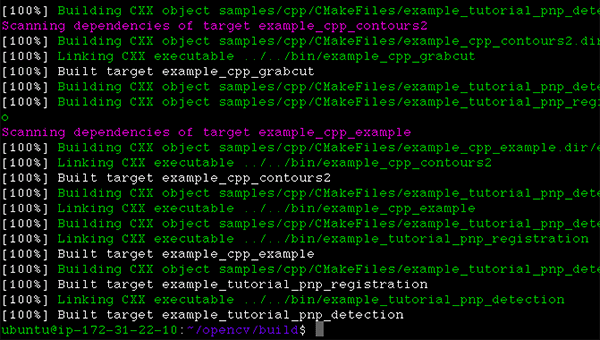
Figure 6: CUDA GPU capable OpenCV has compiled without error. Learn how to install OpenCV with CUDA and cuDNN for your your NVIDIA GPU in this tutorial.
A common error you may see is the following:
$ make make: * No targets specified and no makefile found. Stop.
If that happens you should go back to Step #6 and check your
cmakeoutput — the
cmakecommand likely exited with an error. If
cmakeexits with an error, then the build files for
makecannot be generated, thus the
makecommand reporting there are no build files to compile from. If that happens, go back to your
cmakeoutput and look for errors.
Step #8: Install OpenCV with “dnn” GPU support
Provided your
makecommand from Step #7 completed successfully, you can now install OpenCV via the following:
$ sudo make install $ sudo ldconfig
The final step is to sym-link the OpenCV library into your Python virtual environment.
To do so, you need to know the location of where the OpenCV bindings were installed — you can determine that path via the
install pathconfiguration in Step #6.
In my case, the
install pathwas
lib/python3.5/site-packages/cv2/python-3.5.
That means that my OpenCV bindings should be in
/usr/local/lib/python3.5/site-packages/cv2/python-3.5.
I can confirm the location by using the
lscommand:
$ ls -l /usr/local/lib/python3.5/site-packages/cv2/python-3.5 total 7168 -rw-r--r- 1 root staff 7339240 Jan 17 18:59 cv2.cpython-35m-x86_64-linux-gnu.so
Here you can see that my OpenCV bindings are named
cv2.cpython-35m-x86_64-linux-gnu.so— yours should have a similar name based on your Python version and CPU architecture.
Now that I know the location of my OpenCV bindings, I need to sym-link them into my Python virtual environment using the
lncommand:
$ cd ~/.virtualenvs/opencv_cuda/lib/python3.5/site-packages/ $ ln -s /usr/local/lib/python3.5/site-packages/cv2/python-3.5/cv2.cpython-35m-x86_64-linux-gnu.so cv2.so
Take a second to first verify your file paths — the
lncommand will “silently fail” if the path to OpenCV’s bindings are incorrect.
Again, do not blindly copy and paste the command above! Double and triple-check your file paths!
Step #9: Verify that OpenCV uses your GPU with the “dnn” module
The final step is to verify that:
- OpenCV can be imported to your terminal
- OpenCV can access your NVIDIA GPU for inference via the
dnn
module
Let’s start by verifying that we can import the
cv2library:
$ workon opencv_cuda $ python Python 3.5.3 (default, Sep 27 2018, 17:25:39) [GCC 6.3.0 20170516] on linux Type "help", "copyright", "credits" or "license" for more information. >>> import cv2 >>> cv2.__version__ '4.2.0' >>>
Note that I am using the
workoncommand to first access my Python virtual environment — you should be doing the same if you are using virtual environments.
From there I import the
cv2library and display the version.
Sure enough, the OpenCV version reported is v4.2, which is indeed the OpenCV version we compiled from.
Next, let’s verify that OpenCV’s “dnn” module can access our GPU. The key to ensuring OpenCV’s “dnn” module uses the GPU can be accomplished by adding the following two lines immediately after a model is loaded and before inference is performed:
net.setPreferableBackend(cv2.dnn.DNN_BACKEND_CUDA) net.setPreferableTarget(cv2.dnn.DNN_TARGET_CUDA)
The above two lines instruct OpenCV that our NVIDIA GPU should be used for inference.
To see an example of a OpenCV + GPU model in action, start by using the “Downloads” section of this tutorial to download our example source code and pre-trained SSD object detector.
From there, open up a terminal and execute the following command:
$ python ssd_object_detection.py --prototxt MobileNetSSD_deploy.prototxt \ --model MobileNetSSD_deploy.caffemodel \ --input guitar.mp4 --output output.avi \ --display 0 --use-gpu 1 [INFO] setting preferable backend and target to CUDA... [INFO] accessing video stream... [INFO] elasped time: 3.75 [INFO] approx. FPS: 65.90
The
--use-gpu 1flag instructs OpenCV to use our NVIDIA GPU for inference via OpenCV’s “dnn” module.
As you can see, I am obtaining ~65.90 FPS using my NVIDIA Tesla V100 GPU.
I can then compare my output to using just the CPU (i.e., no GPU):
$ python ssd_object_detection.py --prototxt MobileNetSSD_deploy.prototxt \ --model MobileNetSSD_deploy.caffemodel --input guitar.mp4 \ --output output.avi --display 0 [INFO] accessing video stream... [INFO] elasped time: 11.69 [INFO] approx. FPS: 21.13
Here I am only obtaining ~21.13 FPS, implying that by using the GPU, I’m obtaining a 3x performance boost!
In next week’s blog post, I’ll be providing you with a detailed walkthrough of the code.
Help! I’m encountering a “make_policy” error
It is super, super important to check, double-check, and triple-check the CUDA_ARCH_BIN
variable.
If you set it incorrectly, you may encounter the following error when running the
ssd_object_detection.pyscript from the previous section:
File "real_time_object_detection.py", line 74, in
detections = net.forward()
cv2.error: OpenCV(4.2.0) /home/a_rosebrock/opencv/modules/dnn/src/cuda/execution.hpp:52: error: (-217:Gpu API call) invalid device function in function 'make_policy'That error indicates that your
CUDA_ARCH_BINvalue was set incorrectly when running
cmake.
You’ll need to go back to Step #5 (where you identify your NVIDIA CUDA architecture version) and then re-run both
cmakeand
make.
I would also suggest you delete your
builddirectory and recreate it before running
cmakeand
make:
$ cd ~/opencv $ rm -rf build $ mkdir build $ cd build
From there you can re-run both
cmakeand
make— doing so in a fresh
builddirectory will ensure you have a clean build and any previous (incorrect) configurations are gone.
What’s next?
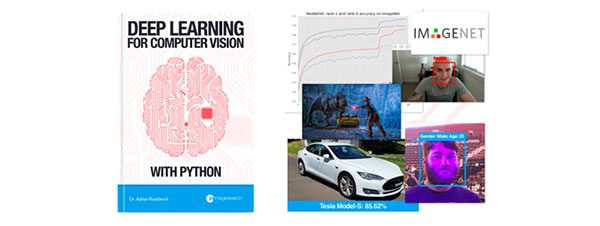
Figure 7: My deep learning book is the go-to resource for deep learning hobbyists, practitioners, and experts. Use the book to build your skillset from the bottom up, or read it to gain a deeper understanding.
Are you interested in how to train your own custom:
- Image classifiers — ResNet, SqueezeNet, GoogLeNet/Inception, etc.
- Object detectors — Single Shot Detectors (SSDs), Faster R-CNN, RetinaNet, etc.
- Image segmentation networks — Mask R-CNN
If so, I would suggest you take a look at my book, Deep Learning for Computer Vision with Python.
Inside the book you will learn:
- Deep learning fundamentals and theory without unnecessary mathematical fluff. I present the basic equations and back them up with code walkthroughs that you can implement and easily understand. You don’t need a degree in advanced mathematics to understand this book.
- How to implement your own custom neural network architectures. Not only will you learn how to implement state-of-the-art architectures including ResNet, SqueezeNet, etc., but you’ll also learn how to create your own custom CNNs.
- How to train CNNs on your own datasets. Most deep learning tutorials don’t teach you how to work with your own custom datasets. Mine do. You’ll be training CNNs on your own datasets in no time.
- Object detection (Faster R-CNNs, Single Shot Detectors, and RetinaNet) and instance segmentation (Mask R-CNN). Use these chapters to create your own custom object detectors and segmentation networks.
1000s of PyImageSearch readers have used Deep Learning for Computer Vision with Python to not only understand deep learning, but also to use it to change their careers from developers to CV/DL practitioners, land high paying jobs, publish research papers, and win academic research grants.
Will you be joining them?
If you’re interested in learning more about the book, I’d be happy to send you a free PDF containing the Table of Contents and a few sample chapters. Simply click the button below:
Summary
In this tutorial you learned how to compile and install OpenCV’s “deep neural network” (DNN) module with NVIDIA GPU, CUDA, and cuDNN support, allowing you to obtain 211-1549% faster inference and prediction.
Using OpenCV’s “dnn” module requires you to compile from source — you cannot “pip install” OpenCV with GPU support.
In next week’s tutorial, I’ll benchmark popular deep learning models for both CPU and GPU inference speed, including:
- Single Shot Detectors (SSDs)
- You Only Look Once (YOLO)
- Mask R-CNNs
Using this information, you’ll know which models will benefit the most using a GPU, ensuring you can make an educated decision on whether or not a GPU is a good choice for your particular project.
To download the source code to this post (and be notified when future tutorials are published here on PyImageSearch), just enter your email address in the form below!
Downloads:
The post How to use OpenCV’s “dnn” module with NVIDIA GPUs, CUDA, and cuDNN appeared first on PyImageSearch.
